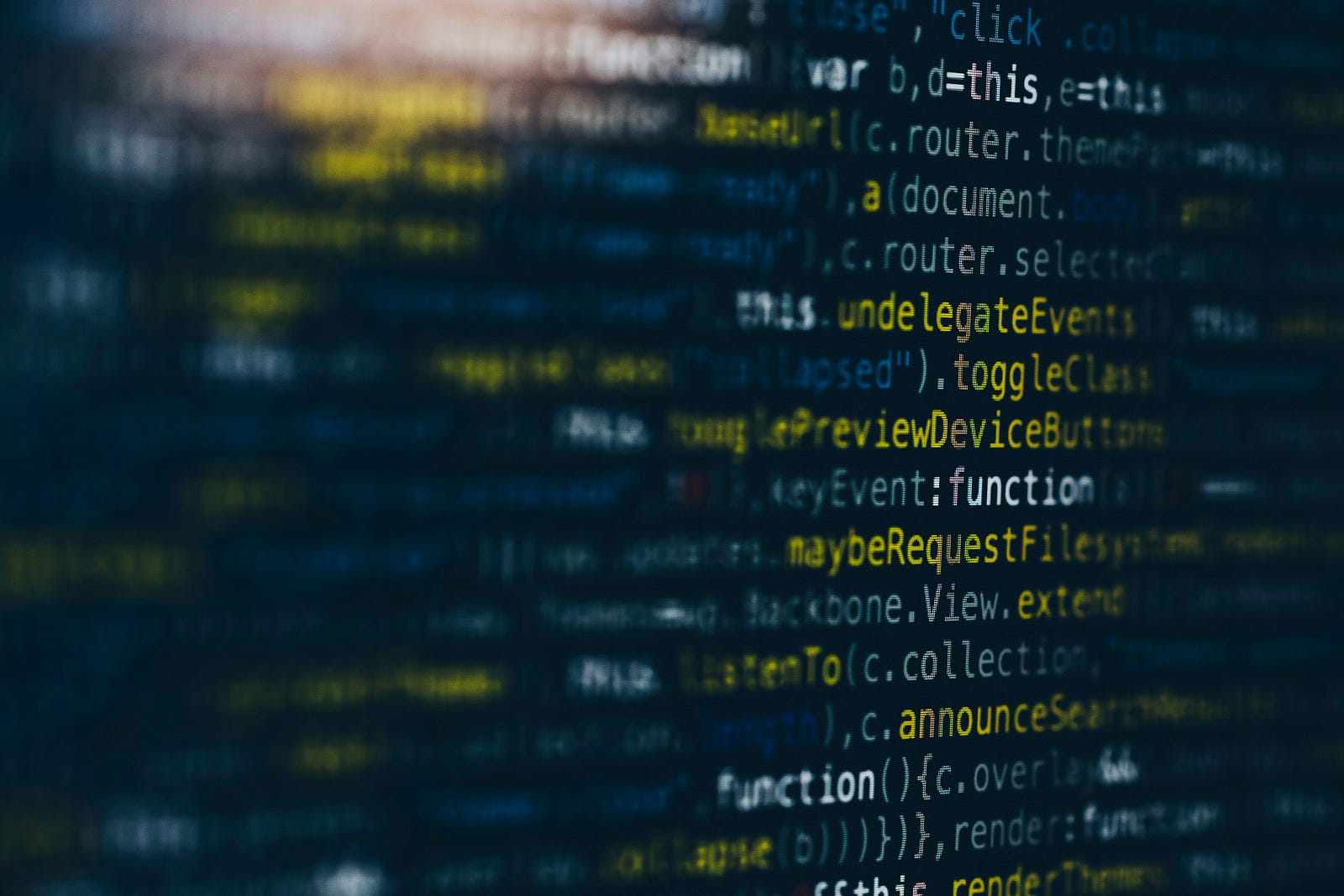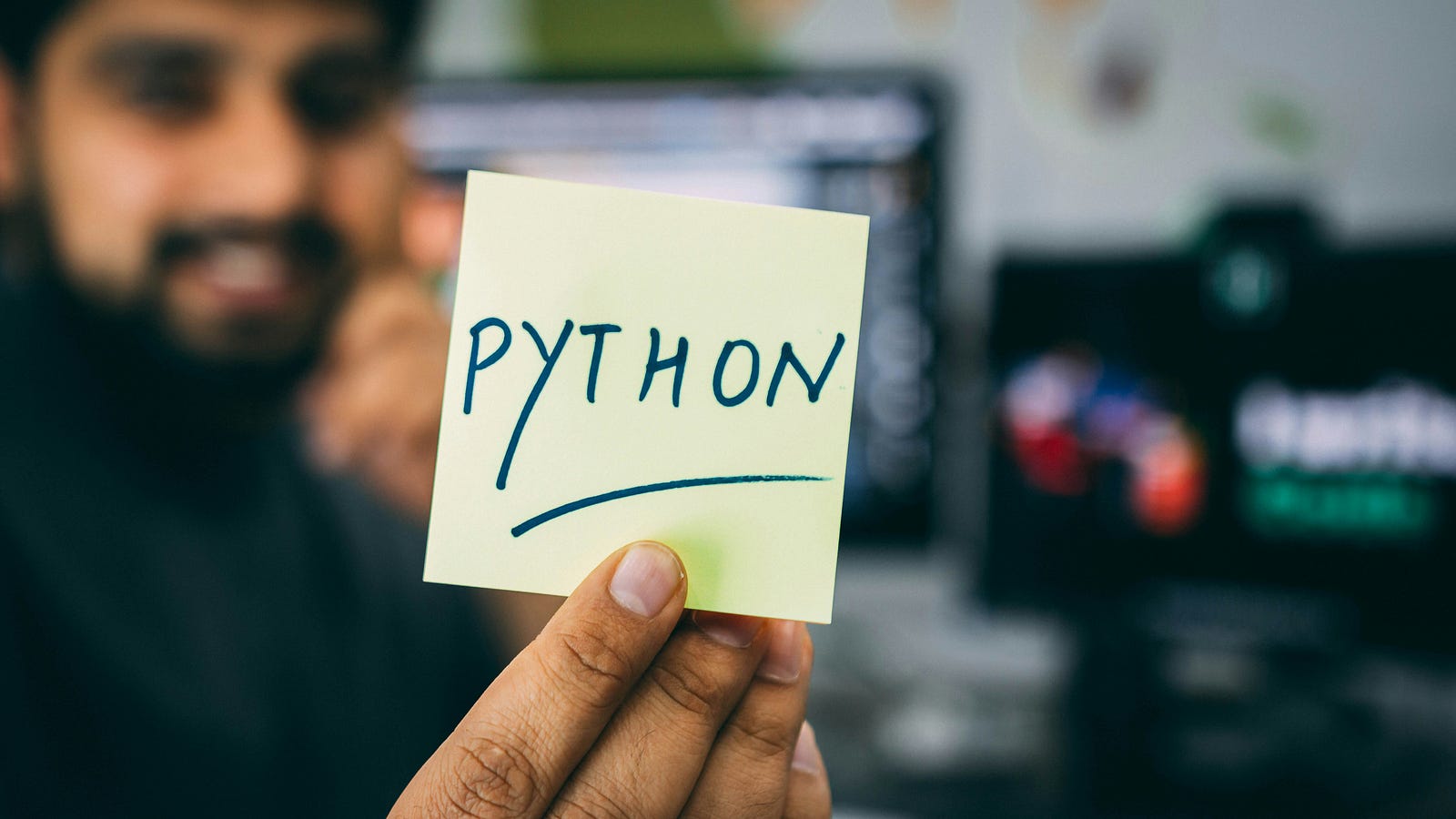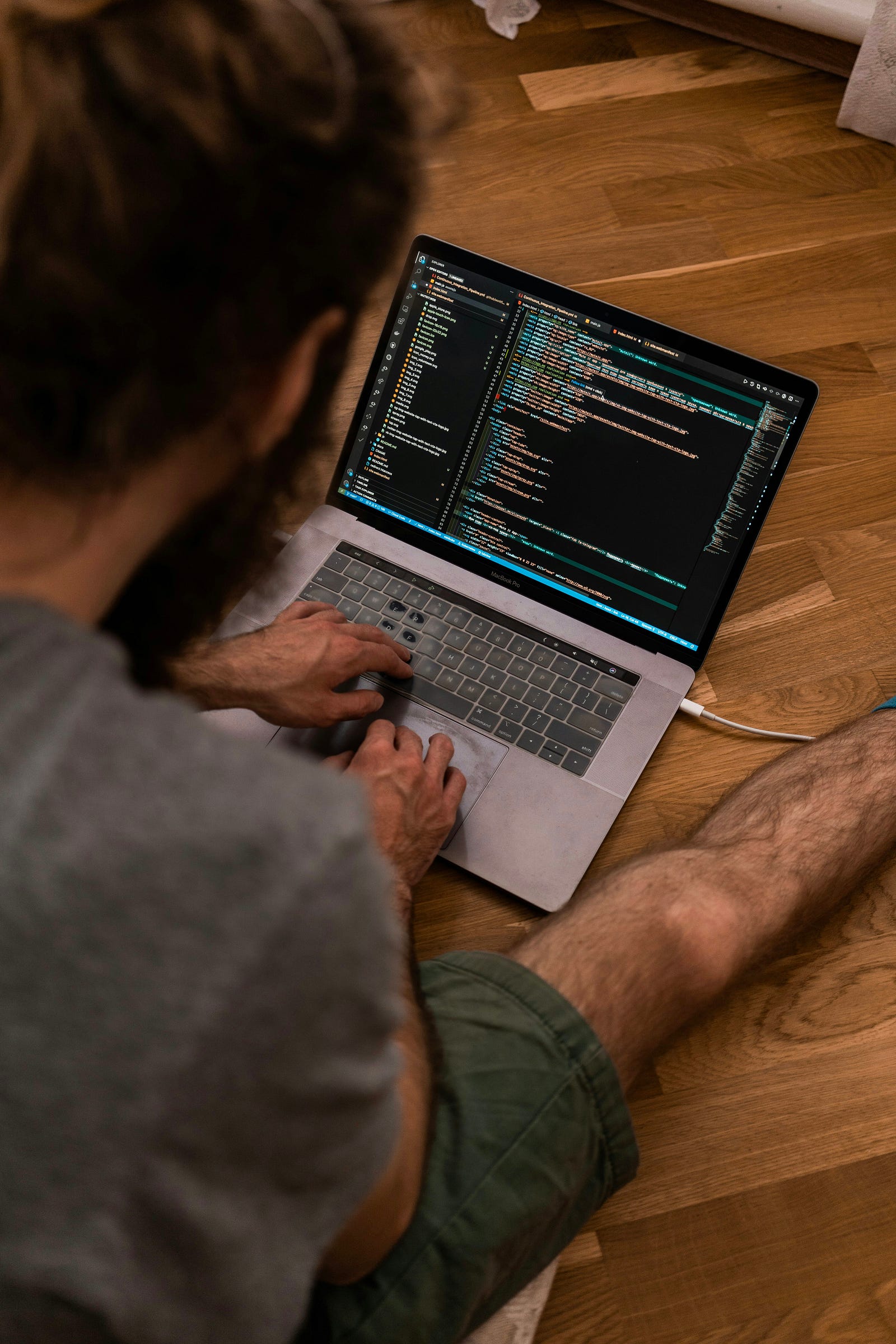Learning to Learn Over 40
 Anthony Gifford
Anthony Gifford
I’ve always had a deep passion for learning, technology, writing, making videos, and playing video games. These interests have been part of my life for as long as I can remember, but I’ve always pursued them on my own terms.
In my day-to-day, mortgage-paying job, I’m the Head of Research and Development, where I specialise in developing new services and using data-driven methodologies to make growth and strategic decisions more efficient. My work is guided by the many data sources available to the organisation I work for. While I’ve been entrenched in this field for years, I’ve found myself often feeling out of my depth when it comes to technical conversations — whether about cloud computing, data systems, low-code solutions, application development, or, more recently, AI.
Photo by Scott Graham on Unsplash
Taking Control of My Learning Journey
As the summer came to a close and the nights began to draw in, I made a decision: it was time to take control of my own learning. I wanted to gain the knowledge and skills that would allow me to rely less on others and, hopefully, increase my value to the organisation and in my career.
This blog will outline my personal learning process, from tackling the anxiety of taking an exam for the first time in over a decade to the tools and applications that are helping me along the way. My goal is to share what I’m learning, the challenges I’m overcoming, and the resources I’m using to make it all happen.
Deciding What to Learn
Deciding what to learn was easy. Microsoft, one of our key partners, offers a comprehensive learning platform covering the entire stack, so I started with AZ-900 — Azure Fundamentals.
Azure is the brand name of Microsoft’s cloud computing platform for those unaware. It leverages one of the largest global networks of data centres providing cloud computing services on a consumption-based model — meaning you only for what you use, and there are many resources, which means that you aren’t limited to the public cloud. In my day job, this is our bread and butter.
In addition, AI isn’t going to pass us over, however many online may think. AI, for some, is a bit of a toy, but when it becomes a tool, this is when AI becomes a superpower for those who use it. No, it won’t replace your job, but when you apply for a role, the person who is proficient in prompting will no doubt have the edge over someone who doesn’t. AI relies heavily on datasets, and therefore, understanding this is another crucial area for me, so DP-900 (Data Fundamentals) will be on the list, followed by AI-900 (AI Fundamentals)
Photo by Markus Spiske on Unsplash
You’ll notice that these are all Microsoft-focused courses. And they are also foundational. That’s by design; at the moment, I do not need to focus heavily on any particular area. But one thing that I really want to do is build something. Sad as it is, It’s all surface-level stuff. And despite my aversion to sorting my disaster of a front garden, I like to get my hands dirty. So recently, I started to learn Python. Python is the programming language used for AI; there are others, but learning Python and calculus is a good place to start if I want to build something and begin to develop a deep understanding.
Photo by Hitesh Choudhary on Unsplash
Python will take a while to learn. Projects are the key to learning any code, which I discovered during lockdown when I learned how to code in JavaScript. Rather than overwhelm myself with my limited free time, I decided to study Python daily and focus on AZ-900. As I write this, I’ve nearly completed the modules for AZ-900 and am about to book my exam.
Tech Tools for Learning… tech
If anyone has read anything from me before, you’ll know that I’m a note-taking app champion, and I have jumped from one to the other and back again. I found the allure of the new shiny thing to become a significant drain on my productivity, and I spent more time tinkering with the system than I did using it for its primary purpose. I wrote about that in this article here. I had, for a while, been writing notes by hand in my day-to-day work, but after a few months, I found that my notes had to be retrieved. Of course, with the best intentions, I would have typed up my notes so they were searchable, but you know — best intentions, eh?
There is one application for my day-to-day that I’ve settled on, not for learning specifically, but because I needed something robust and accessible from the web as I cannot install software outside of a limited list, and so I chose Roam Research. I know there are plenty of free alternatives, but as I mentioned, I could access it via a website and needed something to get going with. I love Roam. It has served me well these past few months, and I use it to keep notes on conversations and tasks, and everything is quickly accessible. Perfect.
Photo by Olga Nayda on Unsplash
Mastering Flashcards and the Problem with AI
For my learning, though, I researched the best app to use, and I opted for Remnote. I’ve been following Keep Productive for many years, now rebranded as ToolFinder, and I was browsing the directory of applications and reviews before opting for this solution.
As I read through the Microsoft Learn units, I was writing my notes in the form of flashcards — questions and answers, but the big lesson I was to learn would come later when I came to review my flashcards. Some of them were pretty good, and as I read the ‘front’ of the card, I had enough context to correctly answer what was on the back.
However, in some cases I’d write quite a lot of notes, sometimes it felt like I was retyping what was written on the Micorsoft site, and I’d use the build in AI feature to create the cards — but these for the most part would be tricky. I would make the cards and gloss over them before clicking ‘accept’ — but when it came to reviewing them, they were, let’s say — not incredibly useful, for example:
Azure Kubernetes Service (AKS) = ??
I didn’t have the context; if I’d written it myself, I’d have written something along the lines of ‘Azure Kubernetes Services is primarily used as?’ = the answer would be ‘a container orchestration service.’
So, there is an art for creating flashcards. I think that flashcards, though, are fantastic for retaining information, but there is a caveat — and this is context, and also, to ensure you revise them daily. Remote uses space repetition, and as someone who enjoys learning but is hindered by anxiety over the incoming examination, I can say that flashcards are a great learning resource, particularly regarding exams.
However, the issue is that Remnote is good for goal-oriented learning rather than for building a knowledge system, in my opinion.
## Building a Knowledge System
Learning Python is different; there is no test at the end, and I have been looking online at how other people use note-taking applications to store information when it comes to programming languages. I have learned that a personal database with examples of code for quick reference can be an invaluable resource. Yes, of course, you can turn to ChatGPT if you wish. Still, if we rely on AI too much and copy-paste without thinking about it, the problem could arise if the code isn’t quite right or isn’t clean. Then it could lead to problems, and I know finding the root cause of the issue will be impossible without putting in the work right now.
I have found the process of learning Python to be somewhat frustrating. Lists, variables, and strings are the core foundations of writing code. Although I want to rush past this and get to the exciting stuff, I am focusing on being slower and actually learning it. It’ll take longer, but I want to avoid scratching my head over the most basic stuff.
I had originally decided to keep all my learning in Remnote, but as I realised what I mentioned earlier, that remnote for me was going to be a short-term solution for a knowledge system. I decided to go to Old Faithful, Obsidian.
Obsidian to the Rescue
Do you ever find that you know that Obsidian is the best option for a knowledge management system, but you don’t want to use it? I was like that for so long. It’s not that I don’t like Obsidian; I’m literally writing this blog, article or whatever you want to call it in Obsidian right now — but honestly, for personal knowledge, it’s the absolute best. This isn’t going to be an article about Obsidian. I don’t think I can say anything that hasn’t been said already about the application — but where I found I was using Obsidian to cement my learning is not with my Python knowledge base — or as a scratchpad — but as part of my learning for the Microsoft exams.
I’m going to talk a bit about exam anxiety — I’m a man in my 40s, so if you’re of a similar age, you may have experience with exam anxiety — but to overcome it, I’ve been taking lots of practice tests, I’d also been using several different sources for my learning (Packt does some suitable learning materials) — but I went into the practice exam. A few questions came up that referenced something that I swore had not been in any of the materials. I thought that I’d missed an entire module or something.
This is where Obsidian came in.
I’d decided to make an index note — of all the categories that I would be tested on and, for each, create a separate note as a backlink. However, I’d write this note after reviewing my flashcards and reviewing the material on the Microsoft Learn site — I’d then write the note from memory, in my own words, to ensure that my understanding was solid.
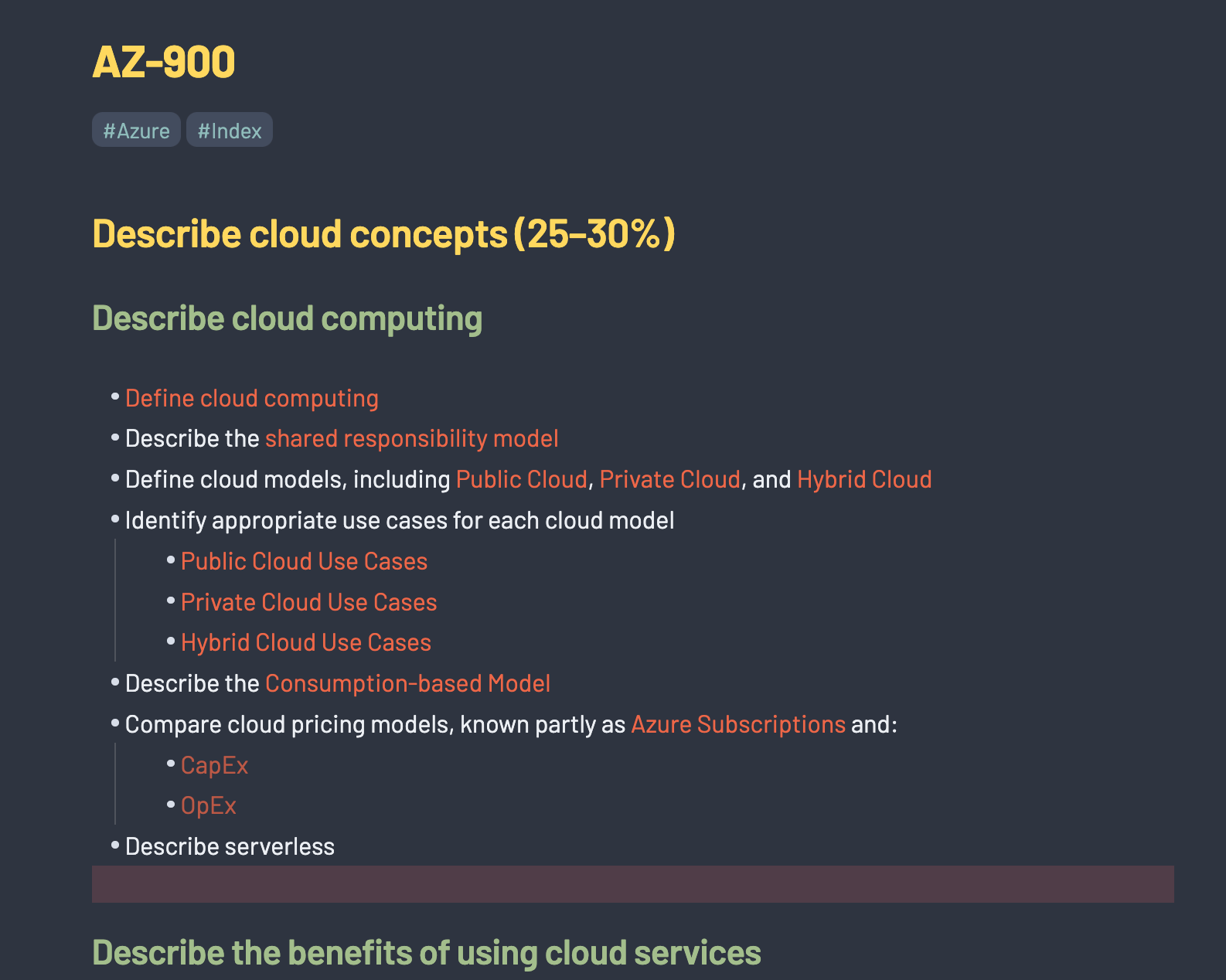
It doesn’t end there; the superpower of backlinks will be realised as I move further into my learning. The relationship between aspects of the cloud computing stack come together from data, AI and infrastructure. I am still determining how this may come together with the Python language. But I’m excited to find out.
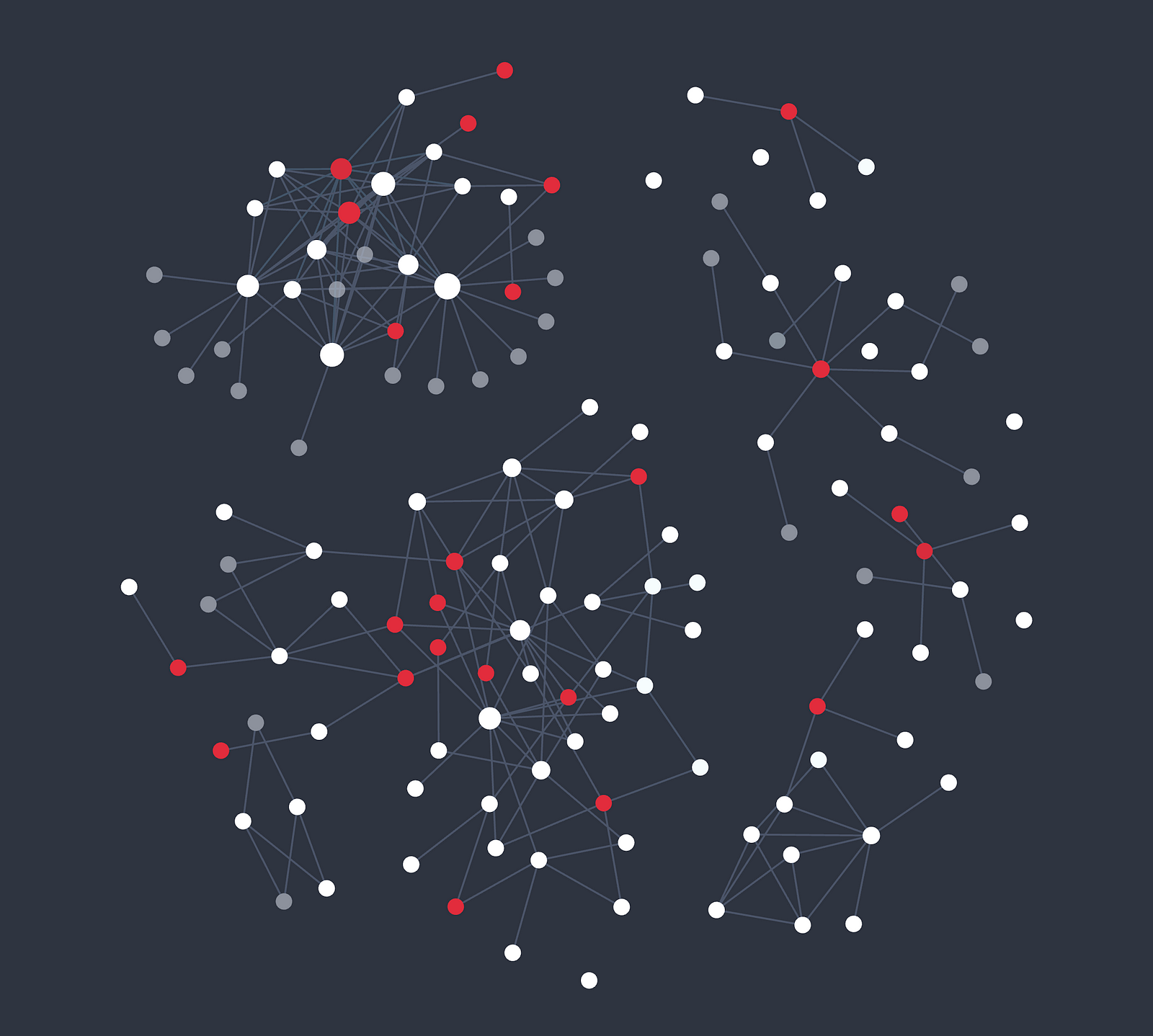
Exam Anxiety
As I write this, I’ve been putting off booking the exam. I got scared when the practice tests revealed some references I didn’t recognise, and though my knowledge was improving, I worried that I might buckle under the pressure.
I will put this out there: Imposter syndrome is genuine, and sometimes I feel like a fraud. But I think part of the key to overcoming exam anxiety is to believe in yourself. Be calm; if things take longer to learn, they take longer. The good thing about being a bit of a student? In my 40s, as I mentioned at the top of this, I’m doing it on my terms. And I have all the time in the world.
I’m trying to overcome this by continuing to do practice questions and confirming my knowledge as I write my notes into Obsidian. I plan to take the exam at the end of November and then move on to DP-900.
It’ll be fine! It’ll be fine!
Subscribe to my newsletter
Read articles from Anthony Gifford directly inside your inbox. Subscribe to the newsletter, and don't miss out.
Written by

Anthony Gifford
Anthony Gifford
I worked in Bid Management for over 15 years, five of which were for a CSP. Surrounded by technical documentation, I learned some stuff by osmosis. I moved into the R&D team and decided to hang up my bid coat and put on a new one - one where I'm leading a team developing new products and services (mainly in Azure) and taking them to market. From ideation to end of life. I'm not a developer; I'm more of a project manager. However, I have decided to start learning formally. With AI just around the corner (trust me, it's not here, not yet anyway 😬), I figured it'd be good to start with the fundamentals. I'm 43 years old, and I'm really starting from scratch. I thought this might make for an interesting blog series and the opportunity to meet and learn from others. It's October 2024 and I've started with AZ-900 (Azure Fundamentals)

